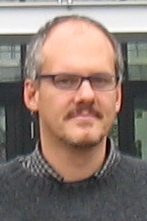Introduction
Contents
“Computational biology is no more about computers than astronomy is about telescopes. Now is the right time to get it clear: it is all about science.”
– An EM’s modification of an Edsger Dijkstra’s cite
Introduction#
Welcome to this course!#
Bioinformatics and computational biology and hence computers and programming are part of the ground knowledge, and CV, of any current biologist. It all started as a side-tool in crystallography -evolution, sequencing, etc-, but has ended up with ubiquity all over the field. Basic programming skills are needed to access, process, analyze data from any branch of biology/biomedicine: clinical, pharmaceutics, virology, genetics, neuroscience, and so on.
Fundamentals of programming in biomedicine will be introduced here with Python 3. You will need a real computer or laptop ready to run Python, not a tablet or any other mobile tech.
Programming is very creative. My advice is not to paste-and-copy -or just read- the codes, that will not work. It is kind of learning to play a musical instrument: to learn you need to reproduce/play music on your own; an active engaging also helps, the more you practice, the more you learn.
In order to start, connect to the JGU Jupyter server and set up your computer to run Python. Let me know in case of any set up problem or if you have some programming experience.
Happy coding!
Enrique M. Muro
Supplementary reading#
The digital toolbox. (2014). Nature. Sep 4;513(7516):6. doi: 10.1038/513006b
All biology is computational biology. Markowetz, F. (2017). PLOS Biol. 15, e2002050. doi:10.1371/journal.pbio.2002050
